They’re beautiful beasts, often unwanted, maligned, exterminated or sold to butchers across the border. They survive a harsh environment that shifts from a sheet of snow in the winter to blistering heat in the summer. It’s a rugged, rocky place of sagebrush, scraggly trees and scant, brackish water. To me they’d always been something of a myth of the high desert near Reno, Nevada. I’d heard about them as fabled creatures of Americana like Pecos Bill; storied tales of the American West. A few years ago on a trip to Reno I decided to bail on the casinos and find the American mustang.
Leaving California on Highway 80 eastbound you drop from the Sierra Nevada down to Reno and the western edge of the Great Basin, a rocky, arid mass that covers much of Oregon, almost all of Nevada and touches the states of Utah, Idaho and Wyoming. Its a coarse, hard and cruel land that embraces a unique harsh beauty.
It was the Great Basin that played a major role in the doom of the ill fated Donner Party. In 1846, this group of immigrants heading west made the tragic mistake of taking a new, untried and supposedly quicker route than the established Oregon Trail. It took them across the Great Basin and it was this vast ocean of sand, rock and sagebrush that swallowed up much of the Donner Party’s food, oxen, supplies and resolve. Anyone taking a drive across this arid land in the summer should take the time to imagine the same journey in covered wagons and having only scant knowledge of the route and no highway to follow.
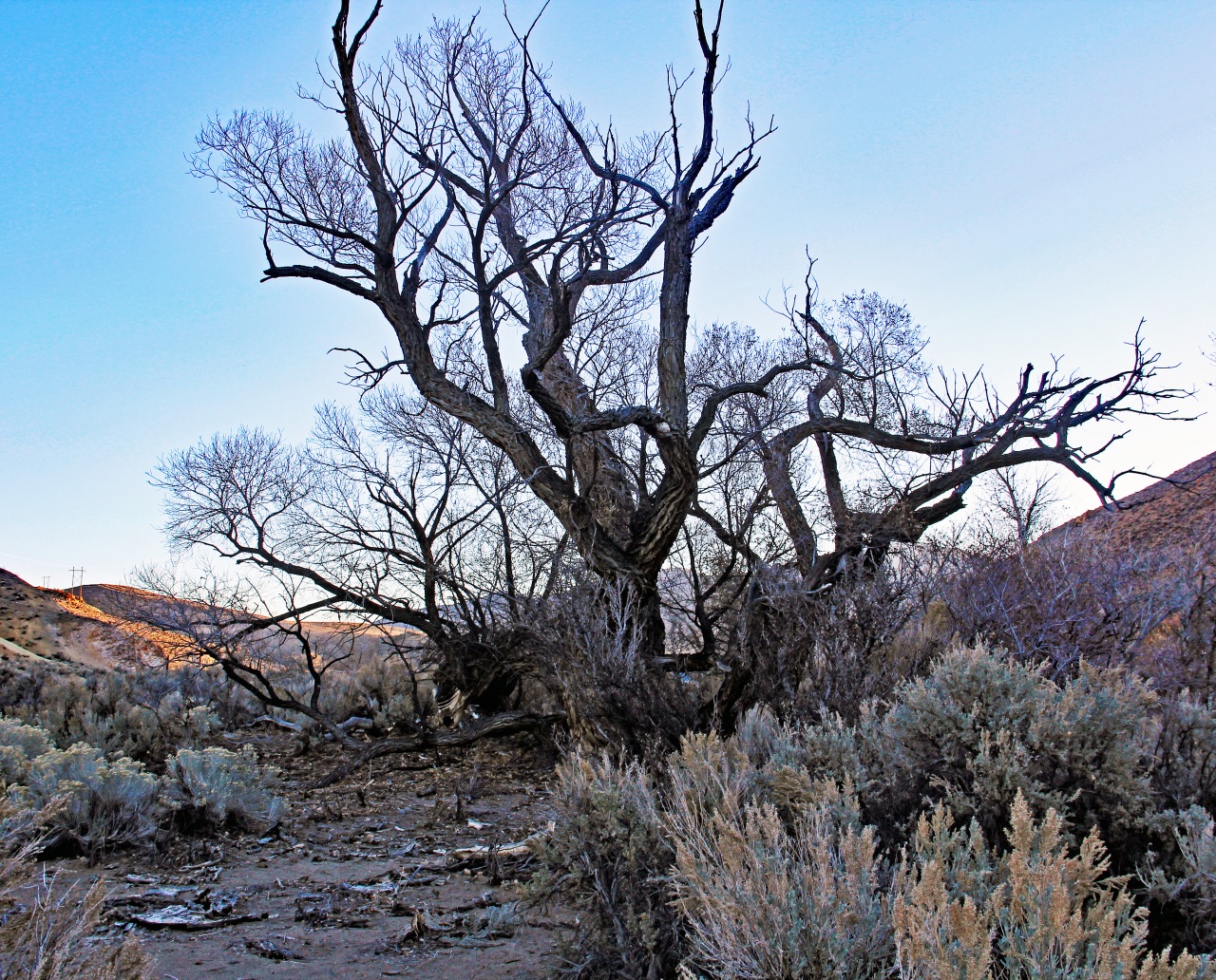
We left Reno and drove due east for a few miles past the town of Sparks and then northeast into the Paiute Indian Reservation and the Pyramid Lake area. We continued to drive past the lake and along a section of the Truckee River without a single sighting and I started to believe that maybe the mustang was just myth – or at least reclusive.
Finally we spotted two bachelors on a hillside. They were some distance away and had we not been driving at a crawl keeping eyes peeled we might have missed them completely. Further down the road we spotted a few more horses grazing at a distance, all too far away to photograph. After a few more distant sightings we left the reservation and drove back on Highway 80 towards Sparks.
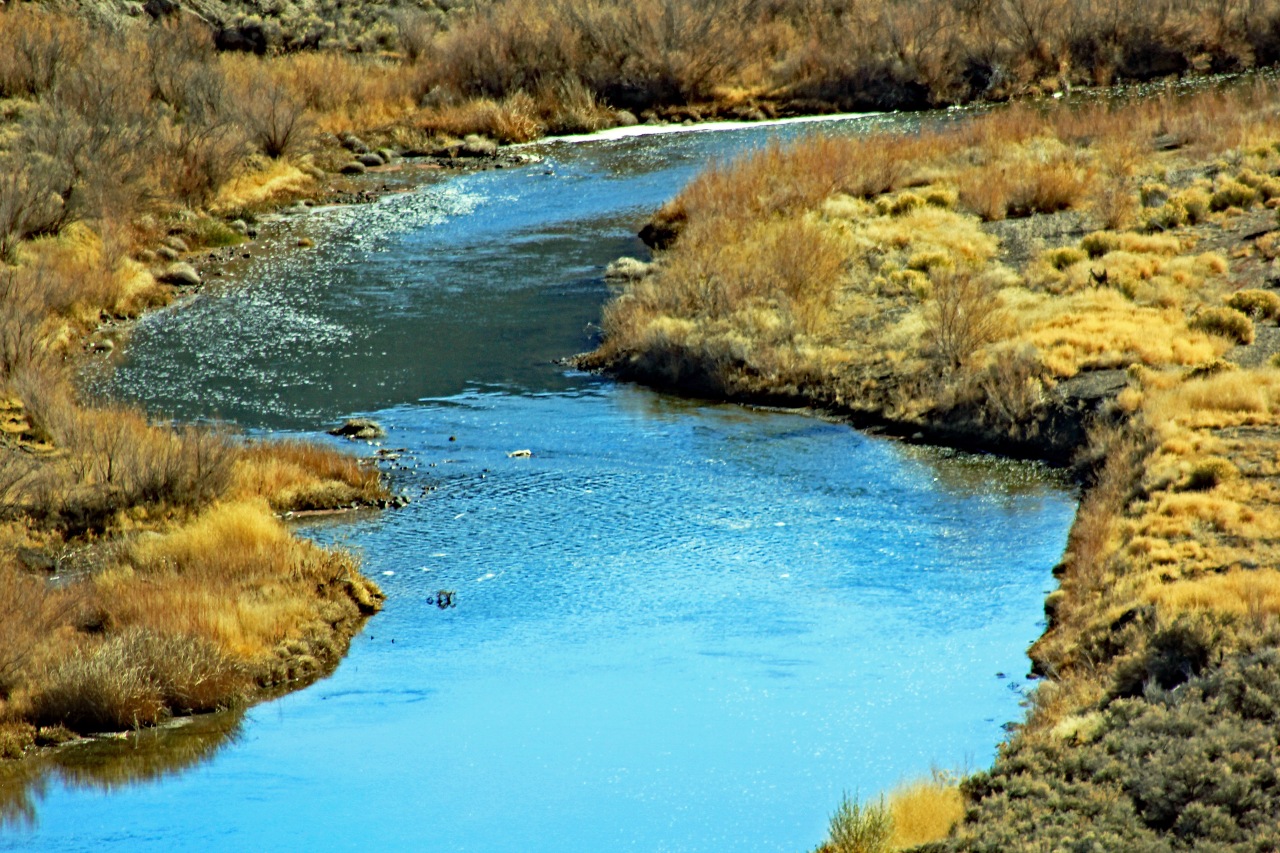
The Truckee River flows through the Paiute Reservation
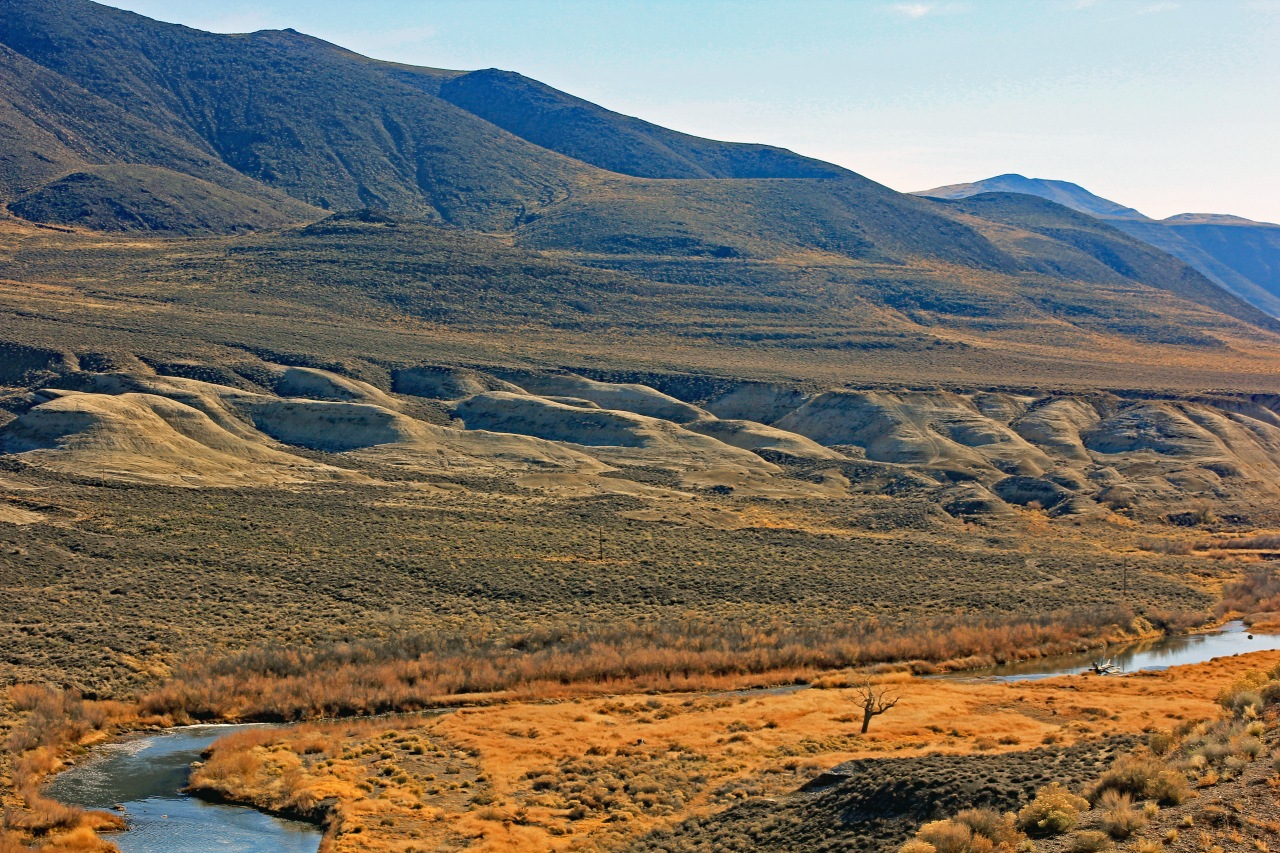
The desolate beauty of the Great Basin. The Truckee winds through the Paiute Reservation

Pyramid Lake on the Paiute Reservation
Just east of Sparks we exited into an area of a few square miles just off to the south of highway 80. Its where “civilization,” is making further inroads into the Great Basin. That is if you consider civilization to be vast warehouses and distribution centers for mega-retailers like Walmart and Petsmart to be civilization. This is a place where massive warehouses rise from the rocky ground like wide flat warts.
Between the warehouses are untouched patches of land where one can find families of wild horses grazing and ambling along, heads down, with no apparent destination. Just off the highway there is a watering hole (photos below) where the horses gather briefly to refresh before moving on. It was within these few square miles that we saw most of the mustangs that day.
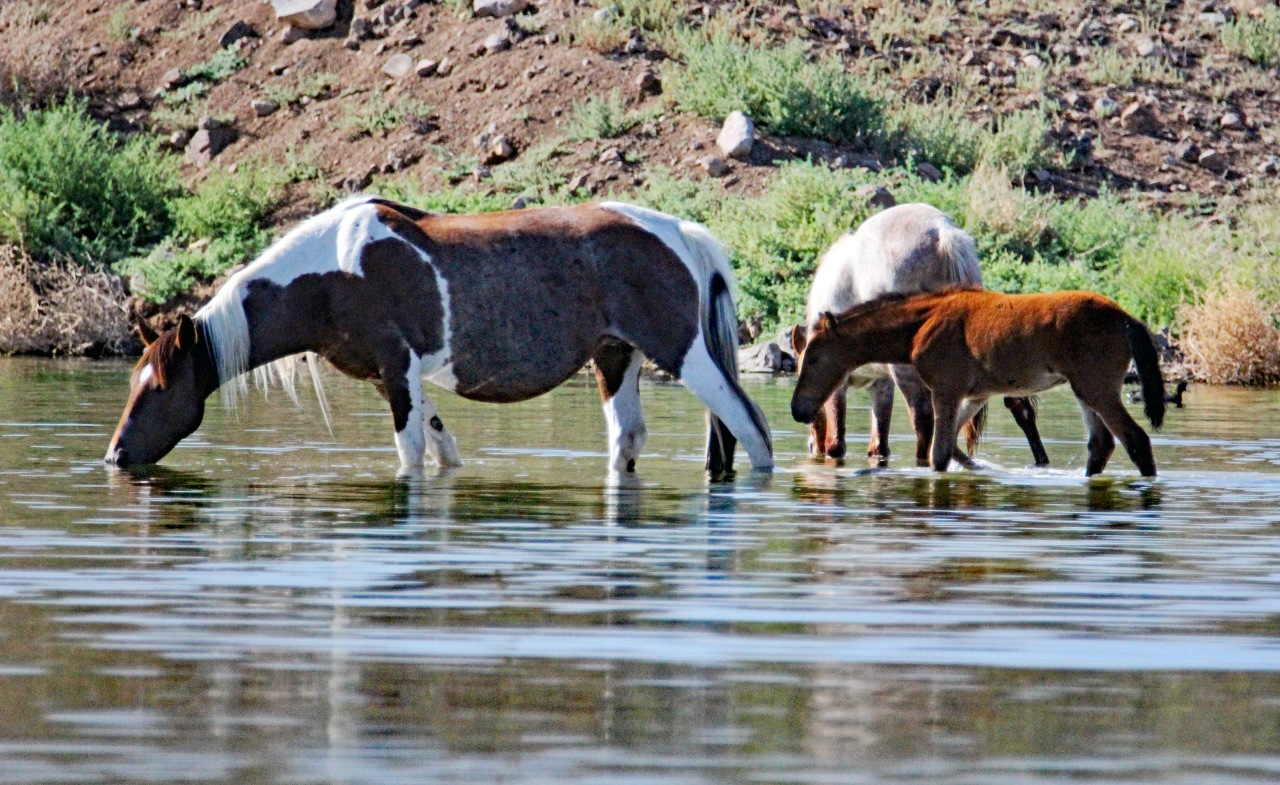
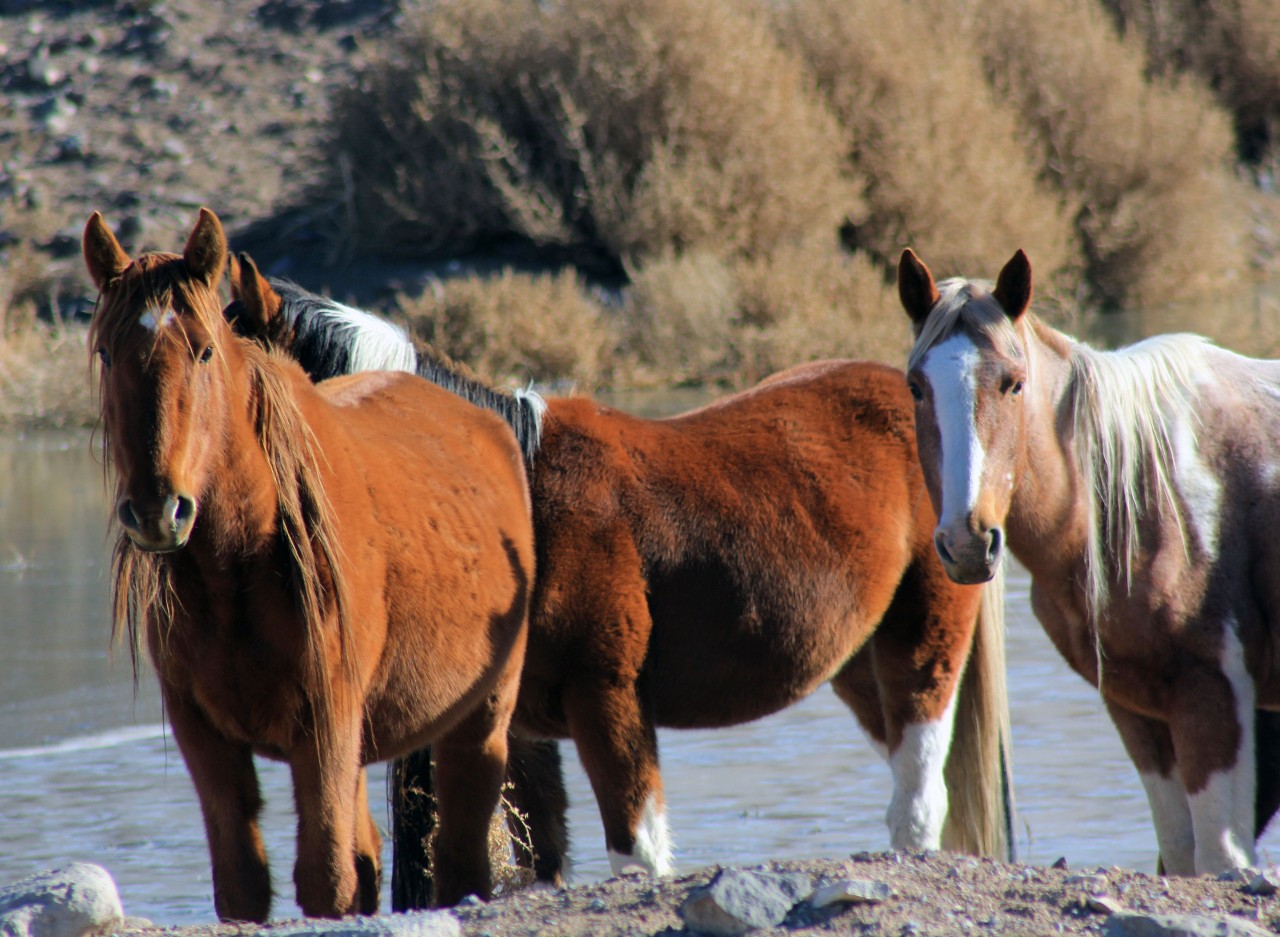
During our initial visit Cora looked at the horses and felt a deep sorrow over their desolate appearance and harsh existence. “I want to feed them,” she said. While that’s a kind and noble gesture feeding these horses does more harm than good. Not being part of their natural diet, food left for the mustangs can sicken them.
You look at these horses and the land that they live on and while they are romanticized as a symbol of freedom you can’t avoid a feeling of sadness over seeing them, unbrushed and with tangles of sagebrush in their manes and tails, wandering the dry land without any apparent purpose or destination. They seem at times like doomed spirits and some of the loneliness that I felt for them was in knowing that historically the horse has been man’s partner.
The horse was a direct participant in America’s progress. The horse helped to build this land. It carried the pioneers. It hauled the goods. It carried the mail.
The horse was the unwilling combatant in our nation’s wars. It lay among the dead at White Plains in the Revolution, at Brandy Station in the Civil War and the Meuse-Argonne in World War One.
The horse carried the Plains Indians who rode with unmatched artistry; skilled horsemen who could launch an arrow at a buffalo while riding at full gallop seated on nothing more than a pelt cinched to the horse’s back. To the American Indian the horse was much more than a mode of transportation. Among the Sioux, the horse was powerful medicine, a supernatural being of great power. The Comanche have been lauded by some historians as the greatest and most proficient cavalry in history.
The horse is tied inextricably to the history and lore of America. A symbol of the American West the horse is part of America’s DNA.
Since that initial trip to see the mustangs every trip to Reno now includes an early morning drive to this area to observe and photograph the horses. While Cora sleeps in I get up before the sun and drive east. Most of the photos in this article were taken over several visits in both summer and winter.
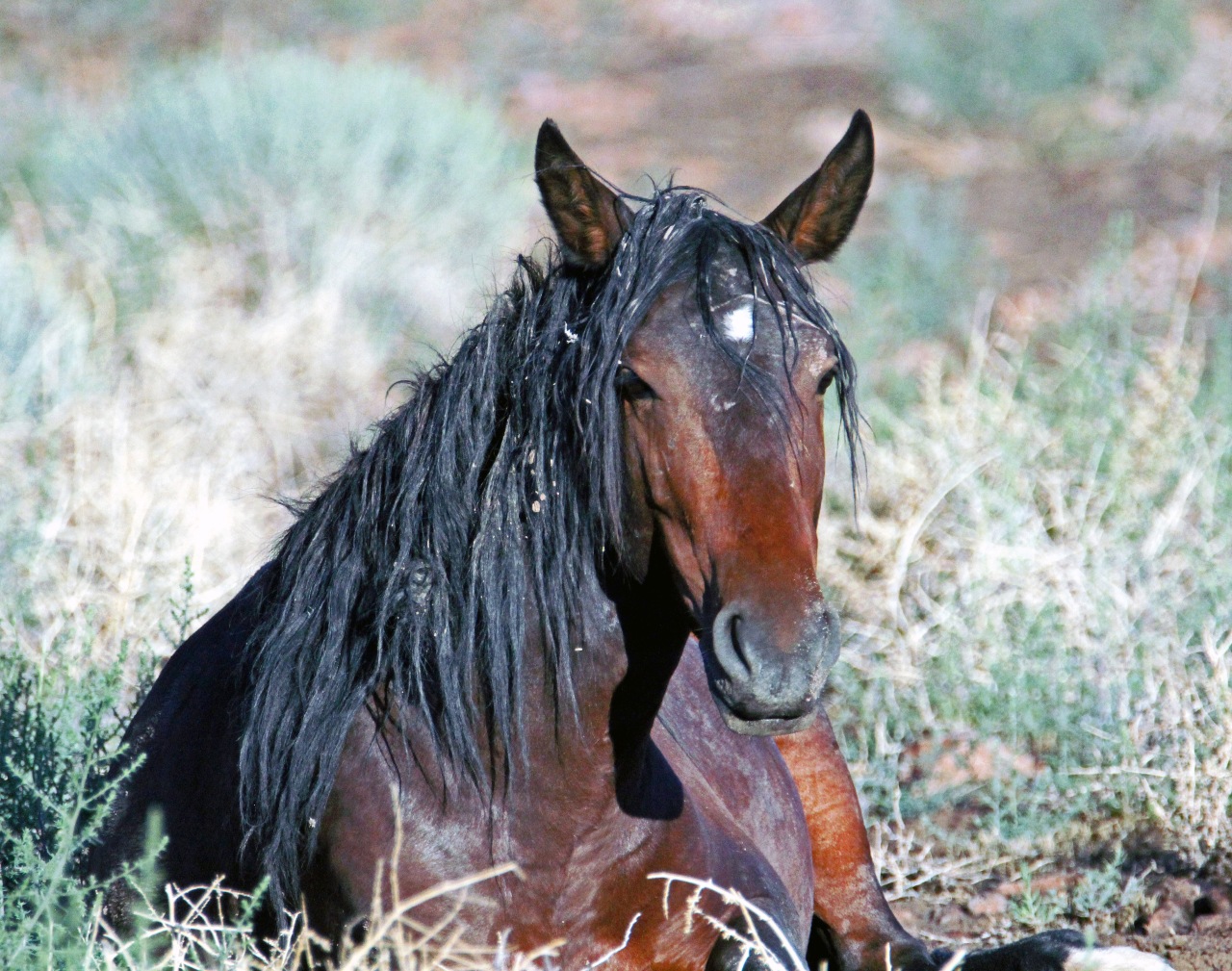
Above and below: This big boy was laying peacefully near the side of a little used road. He watched me patiently as I photographed him. In the photo below he seems to be giving me a wary eye.
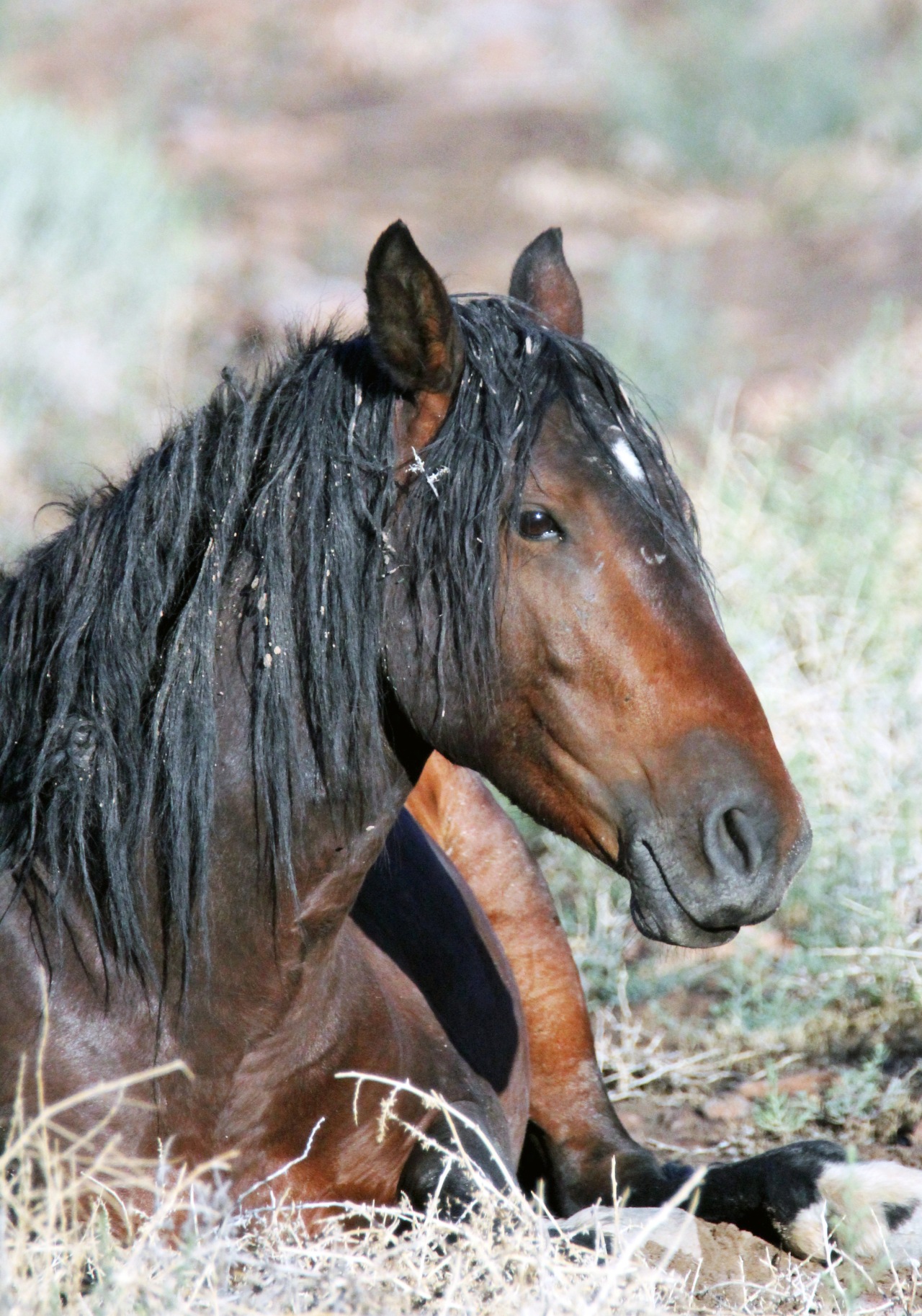
During each of my visits I approached the horses to a distance of about 20 yards. They kept an eye on me but my presence didn’t seem to bother them.

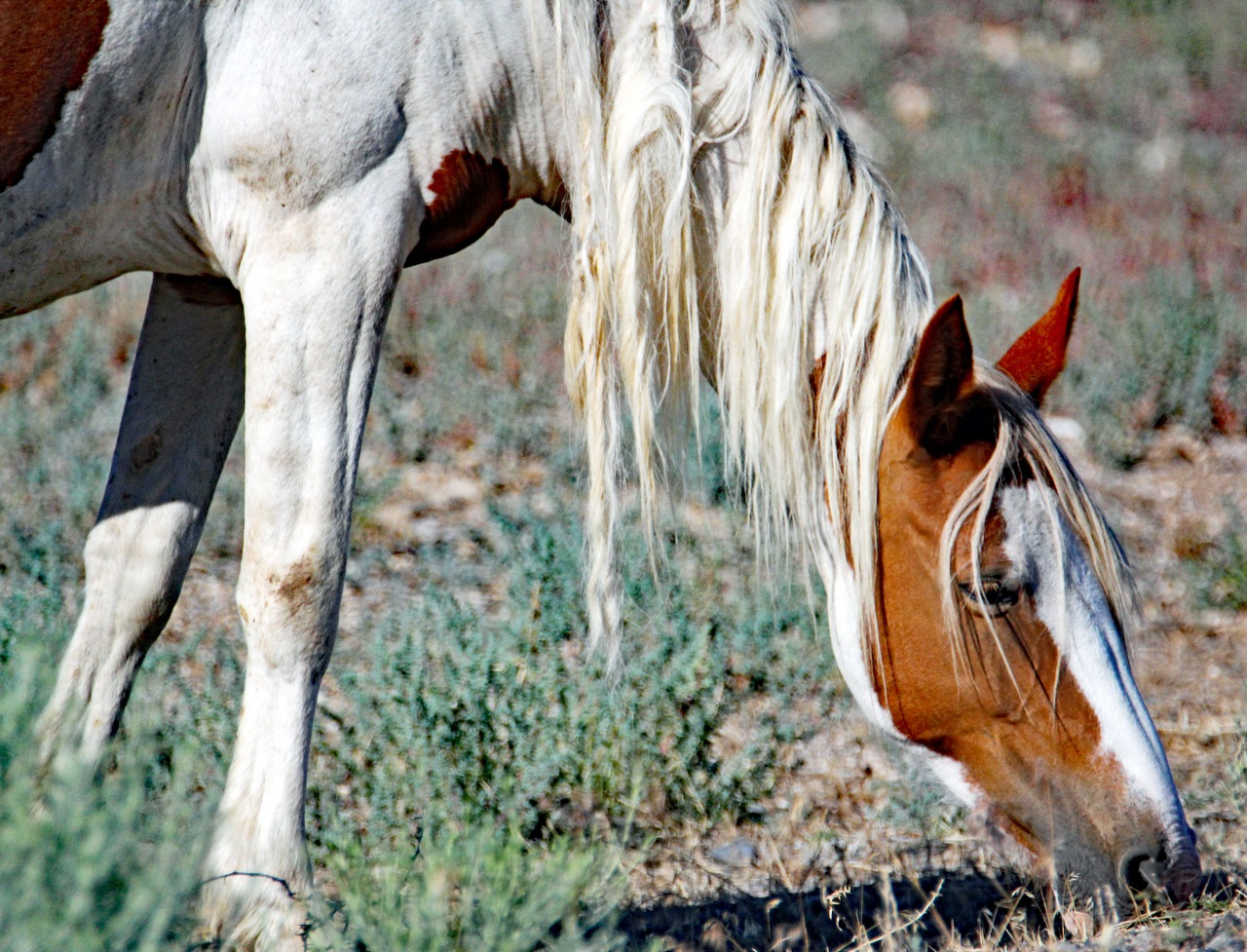
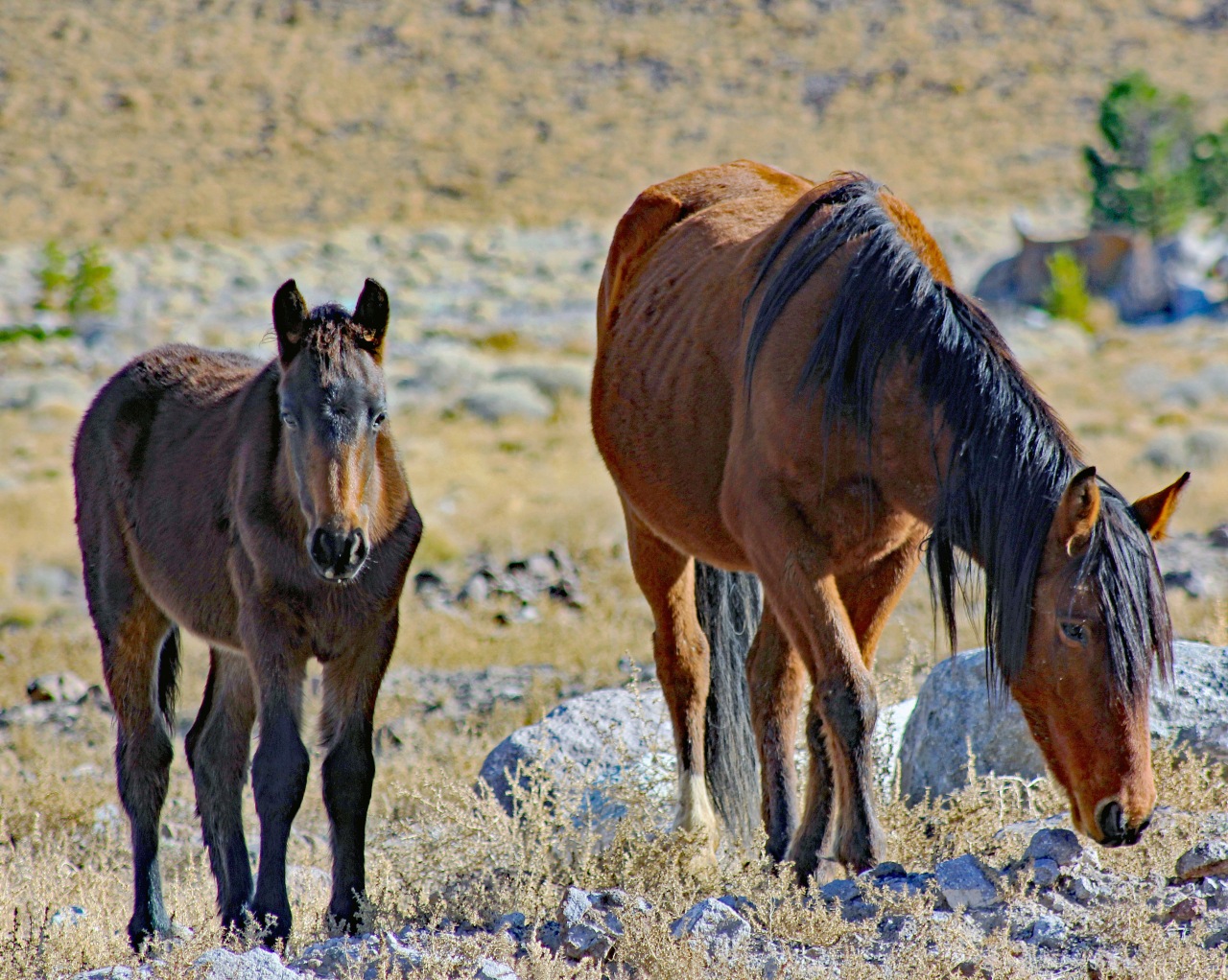
The youngster wondering with the old man with the camera is up to.
It often happens in America that national treasures both animate and inanimate fall victim to the reality of what has become the real American treasures; business, politics and above everything else – money. The American mustang horse has become a political football, in a battle between ranchers, miners, developers and bankers on one side and conservationists, scientists and advocates for the horses on the other. All agree that there is a problem of over population and there are valid points of view on each side. In the middle of all of this the government, in the form of the Bureau of Land Management (BLM) has tried feebly to manage the situation in a manner that usually falls somewhere between ham handed, incompetent and downright cruel.
The BLM in a model of cruel efficiency herds horses into collection areas through the use of helicopters that chase the horses for miles as shown in videos shown on the website of the American Wild Horse Campaign.
In 2013 a federal judge issued a restraining order halting a roundup operation in which a BLM chopper chased horses through a barbed wire fence.
An NBC report documented cases in which horses were herded into undersized pens where the panicked animals kicked and gouged each other or become ensnared in the bars of the pen itself. The same report documented the instance of a young colt that was chased for so long and so far by a helicopter that it literally ran its hooves off. It had to be put down. In the real world this type of behavior would have someone sitting in front of a judge facing a sentence for animal cruelty. In the bureaucratic world of the United States Government it’s just your tax dollars at work.
Once collected, family groups are separated with males, females and young horses sent to separate facilities. Some of the horses are put up for adoption. Others have allegedly found their way to the dinner table. In 2013 it was alleged that the BLM sold 1700 mustangs to a Colorado rancher for 10 dollars a head, who then turned and sold them to a Mexican slaughterhouse just over the border. In March of 2014 a small herd of horses was rounded up in Wyoming by the BLM and then turned over to the state which in turn sold them to a Canadian slaughterhouse.
Not surprisingly the Trump Administration, which can’t find its way towards compassion for humans much less horses has made things worse for the American mustang. Contradicting scientific studies that propose humane treatment and population control the Trump administration is weakening protection and essentially calling for the mass slaughter of wild horses and burros. Not surprising since the Trump administration has a habit of never letting science get in the way of various and sundry outrages that usually enrich business at the expense of nature, the environment or compassion.
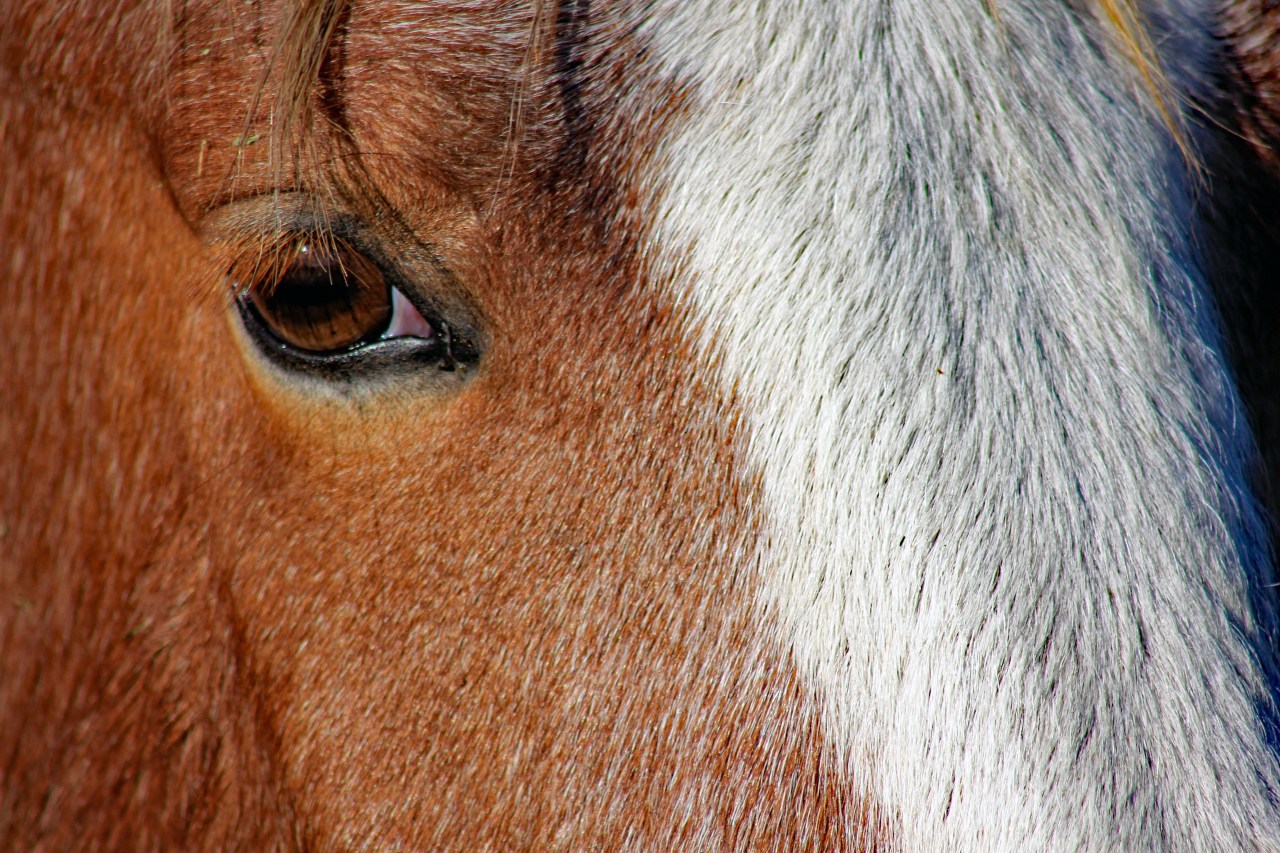
Eye of the mustang
It’s been two years since I’ve been to the Reno area. I plan to return soon so that I can take a another side trip to observe this living symbol of the American West in a land that’s a unique convergence of the bleak and the beautiful; the stark and the colorful.
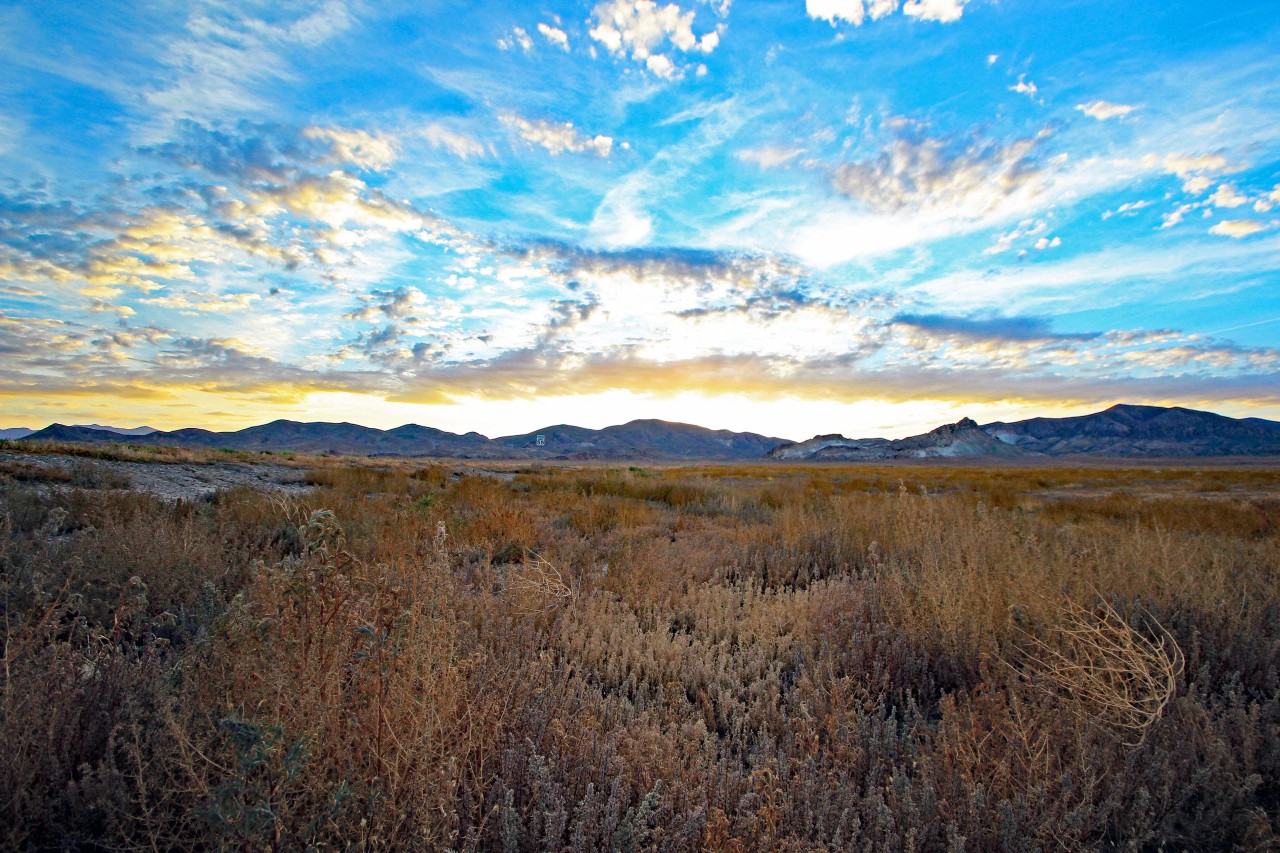
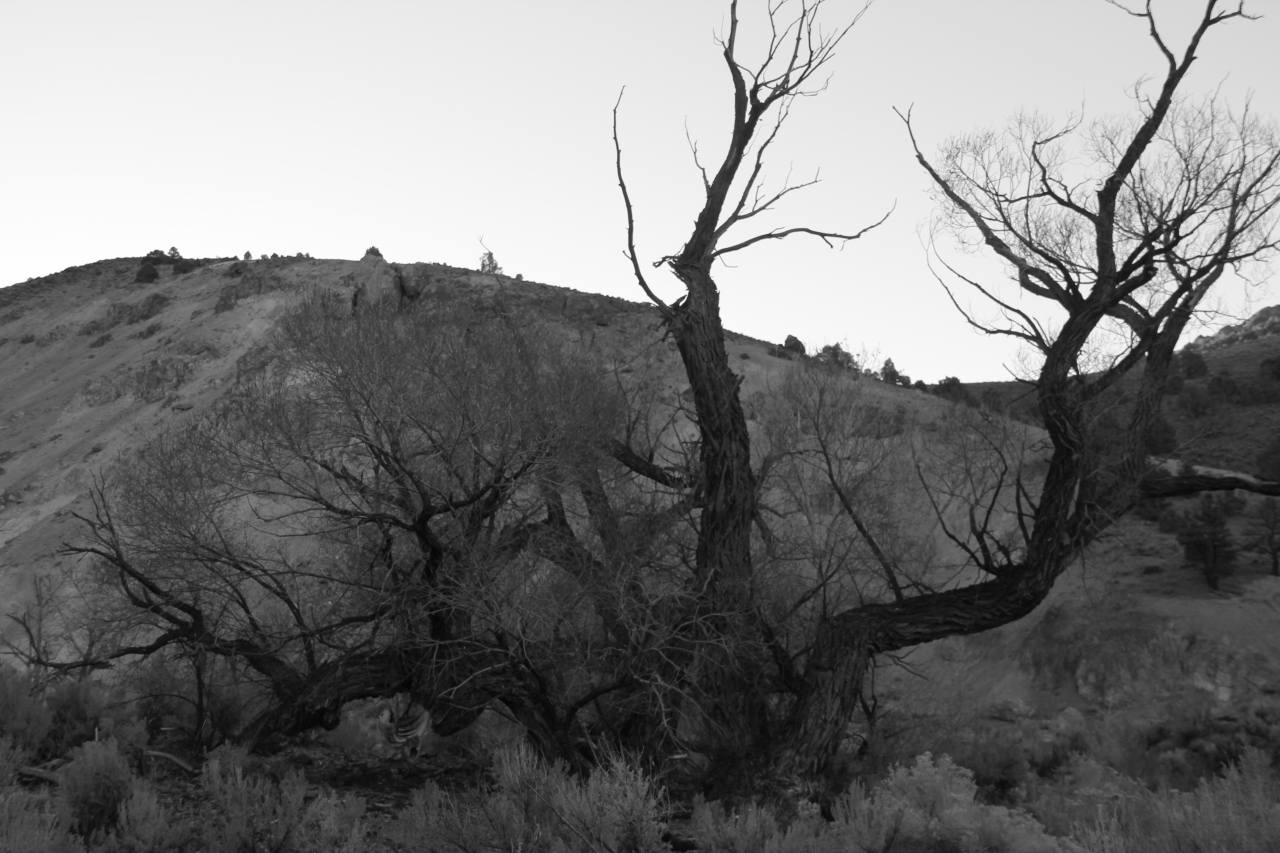
My photo outings in mustang country haven’t been without some humorous moments. Driving past Sparks I’ve taken a number of different freeway exits always looking for something new to find and photograph. One afternoon while Cora was back at the casino feeding pennies to a slot machine I went eastbound to see what I could find.
A few miles past Sparks there was a nondescript exit signed, Mustang. Well, if the mission is to photograph mustangs then this must be the place. I took the exit and followed a narrow road that meandered downhill in twists and turns. I drove slowly craning my neck for a glimpse of a horse or something else that might catch my eye.
As the road drew towards it’s end I turned a corner and there in bright hot pink was a sign that told me I’d arrived at the World Famous Mustang Ranch (The Mustang Ranch is one of Nevada’s legal bordellos). I contemplated just going in for a drink to see what it was all about. Just a drink. Yeah….no. Knowing full well what it’s all about I went back to the casino to check on Cora to make sure she hadn’t lost the family fortune a penny at a time.


A very moving post. Beautifully written, Paulie. It was difficult to watch the NBC report. Yes, they should be “in front of a judge facing a sentence for animal cruelty.”
These are remarkable photos. I think of the poem by Ronald Duncan.
LikeLiked by 1 person
Thank you very much Amy. Sometimes I wonder just how people can do some of the things that they do and just go on with daily life as if they’re decent human beings.
LikeLiked by 1 person
That makes me even more angry…
Beautiful photos of these mustangs.
LikeLiked by 1 person
Such a beautiful, sad post. Why on earth would anyone harm these beautiful, peaceful wild creatures. Hoping action is taken to protect them but unfortunately suspect it won’t happen anytime soon
LikeLiked by 2 people
Thank you so much Tina. Lately, like the last 2 1/2 years it’s been a wonderment why anyone would do a lot of things. Thank you very much for visiting and commenting.
LikeLike
This is total WOW, Paulie!!!!!
LikeLiked by 1 person
As always thank you. I appreciate your comments and I feel humbled that you enjoy my posts.
LikeLiked by 1 person
I think you are amazing, Paulie!
LikeLike
Fabulous post! Absolutely stunning. Thank you.
LikeLiked by 1 person
Thank you Isabel for your kind words and for visiting my site.
LikeLike
Heartbreaking. Humans can be so cruel.
LikeLiked by 2 people
Yes they can Eliza. And I would venture to guess that you don’t have to look hard to find that the pursuit of money is behind much of human cruelty.
LikeLiked by 1 person
Flat-out incredible, Paulie. The colors pop, the prose hums. So alive. (And if I can be crass: Fuck Trump, once and for all.)
LikeLiked by 1 person
Thank you so much for the kind words Chris. Telling Trump to fuck off isn’t crass at all. Feel free to use this platform to unload on him to you heart’s content.
LikeLiked by 2 people
I’ve been through that area. I never saw any wild horses but maybe they’re wary of people, and with good reason. One of my drawing posts called “Dit Dot” was drawn in North Carolina about 20 years ago and one of the most magical things about the area is the wild horses which still live on the outer bank islands. I don’t know if they’re still there but I hope they are.
LikeLiked by 1 person
The only time that I recall seeing mustangs from the highway was when we were out in the middle of nowhere between Elko, Nevada and the Idaho border. That said the area that I wrote about has a fair amount of big rig traffic going in and out of the warehouses.
The horses are surprisingly approachable. I kept in mind the Yellowstone NP guidelines for approaching bison and elk and used 20 yards as my limit line. The photo that I took of the young horse with its mother was taken from about 20 yards away. “Mom” (in the photo) was tolerant and “Dad” who isn’t in the photo was off to the side keeping an eye on me but he never approached. On one occasion I saw more commotion when a strange stallion approached a family group. It came very close to two stallions fighting it out.
Yes there are wild horses still roaming the Outer Banks of NC.
Thank you so much for visiting my site.
LikeLiked by 1 person
What a lovely post – both the pictures and the words about these beautiful creatures ❤ My husband and I saw some wild horses when we were roaming about that area as well. Thanks for sharing all this with us!
LikeLiked by 1 person
Thank you for the nice compliments and thank you for visiting.
LikeLiked by 1 person
Great pictures. It’s amazing how desolate areas can be so beautiful. Horses, of course, are always beautiful. Grayson Highlands State Park in the mountains of Virginia has wild ponies. You can get closer to them than 20 yards, but it’s forbidden to pet or feed them, Fortunately, they are treated better than the mustangs. Maybe the BLM needs to take lessons from Virginia State Parks.
LikeLiked by 1 person
Thank you for commenting Marie. My dad’s family lived in Salt Lake City and during the drives across the desert I hated that place. As an adult I see it much differently. It’s strangely beautiful but it’s being made ugly by the incursion of the distribution centers and there are plenty of them.
I found it surprising that I could get so close to those horses without them bolting and I know that you can approach to about arm’s length. I wonder if there’s something in their “gene memory” that recalls the relationship between horse and man.
LikeLike
I love them so very much. They represent what the American Establishment despises and that’s freedom. They are gorgeous. More beautiful than any show horse. They are rough and tough and magnificent. I truly love your photographs and am grateful for having seen them. Thank you.
LikeLiked by 1 person
Thank you so much for the wonderful comment. Its a yearly trek to Reno for us to relax and gamble a bit and every time that we’re there I take an early morning drive east to find and photograph them.
They are American icons that deserve better than they receive.
LikeLike
I enjoyed your post. Have you watched the documentary “Unbranded?”
LikeLiked by 1 person
Hello Laci, Thank you very much for the comment and for visiting.
Yes I watched “Unbranded” as soon as it came out. I enjoyed it immensely and I watch it again every now and then.
That said it isn’t without some controversy as pointed out in High Country News.
https://www.hcn.org/articles/mustangs-deserve-a-better-film-than-unbranded
LikeLiked by 1 person
You are welcome!
LikeLike
Hi Paul,
Stunning pictures. You did a wonderful job capturing the beauty and elegance of the mustangs in their natural setting. Such big animals, I’d probably be a bit scared to see them close up.
Regarding the roundup operation, I can’t even … some people deserve to be shot and pissed on and shot again. How we treat other sentient beings is abhorrent. I was sickened to read about the young colt that was chased for so long it had to be put down.
More and more often I think it’s us humans who need to be put down.
Your blog reminded me of an old short story I read years ago called “The Most Dangerous Game” by Richard Connell. Because it’s public domain, it’s available online for free if you wish to read it. I don’t want to give anything away.
It disgusts me when humans inflict pain and/or death on animals as a means for their own enjoyment. And just as I was composing my comment here, a story popped up that gave me great pleasure.
The headline read: Rooster fitted with blade for cockfight kills its owner.
The bird had a knife attached to its leg to take on an opponent when it inflicted serious injuries to the man’s groin as it tried to escape.
Karma, baby. KAR-MA.
Sometimes the animal wins.
eden
LikeLike
Hi Eden, Thanks for reading. I can’t do the animal stories. Over 40 years ago I visited Mexico and took in a bullfight. Big mistake. It was horrible. I’ll send you a little touch of person/animal cheer in an email – because it’s too long to put in a comment.
LikeLike